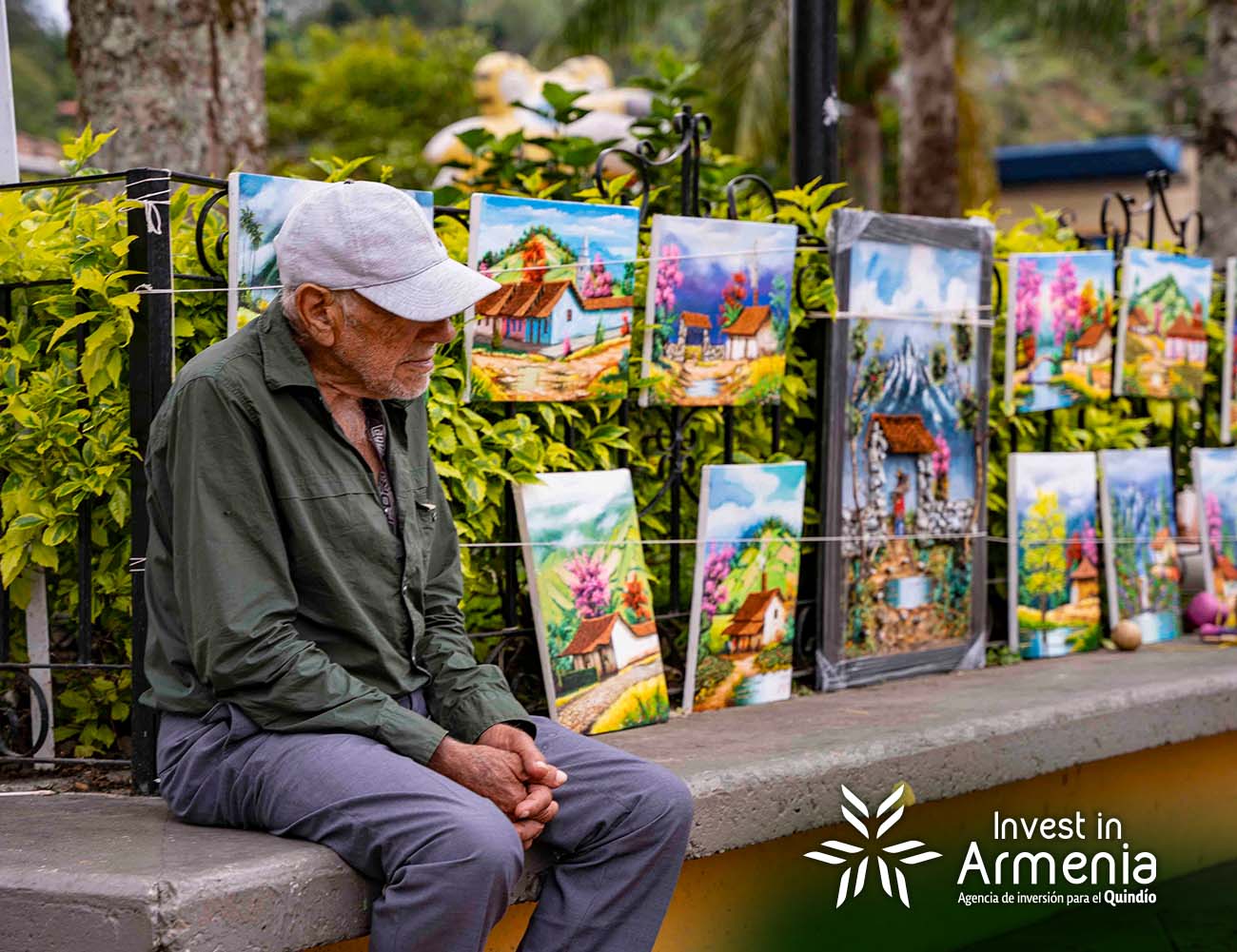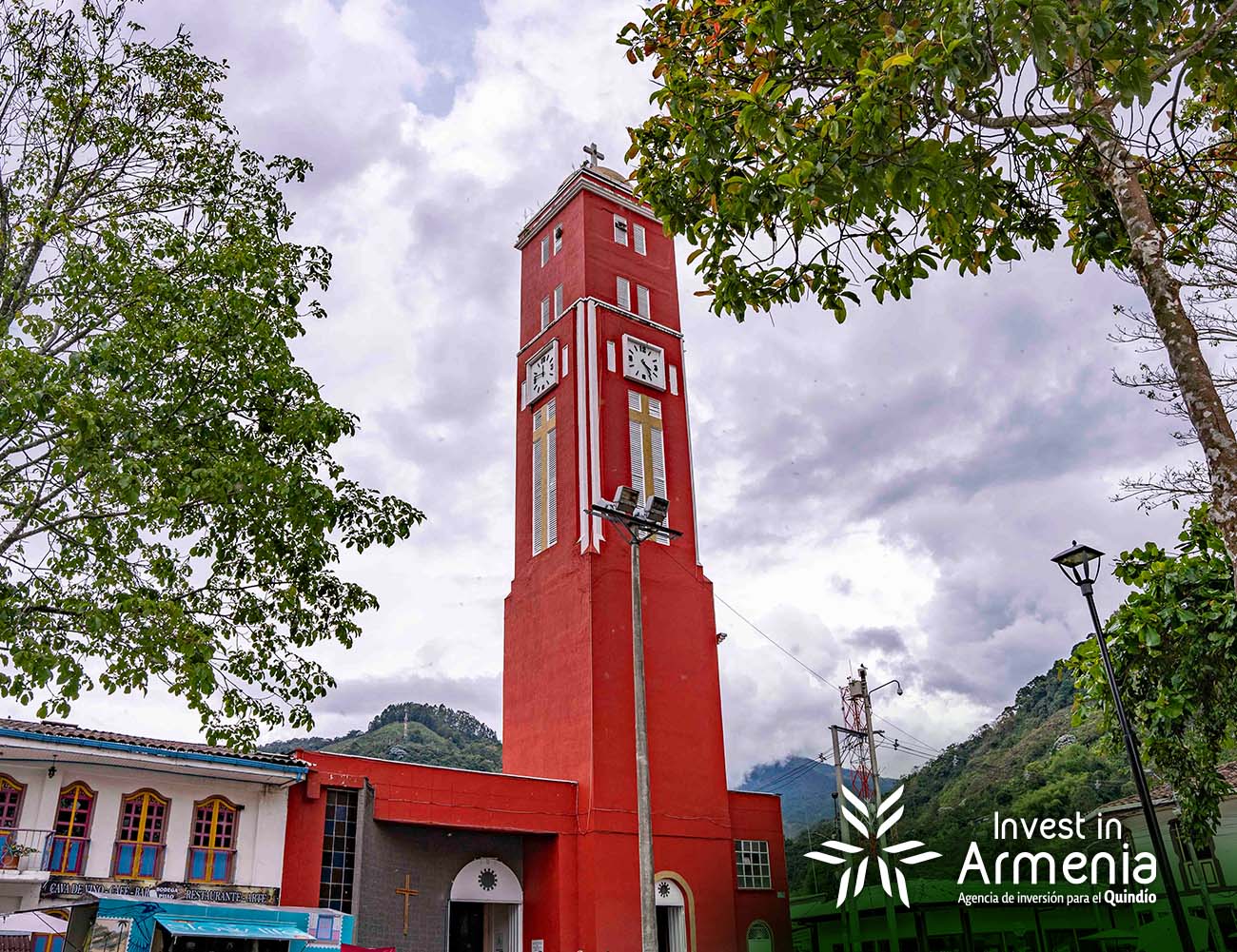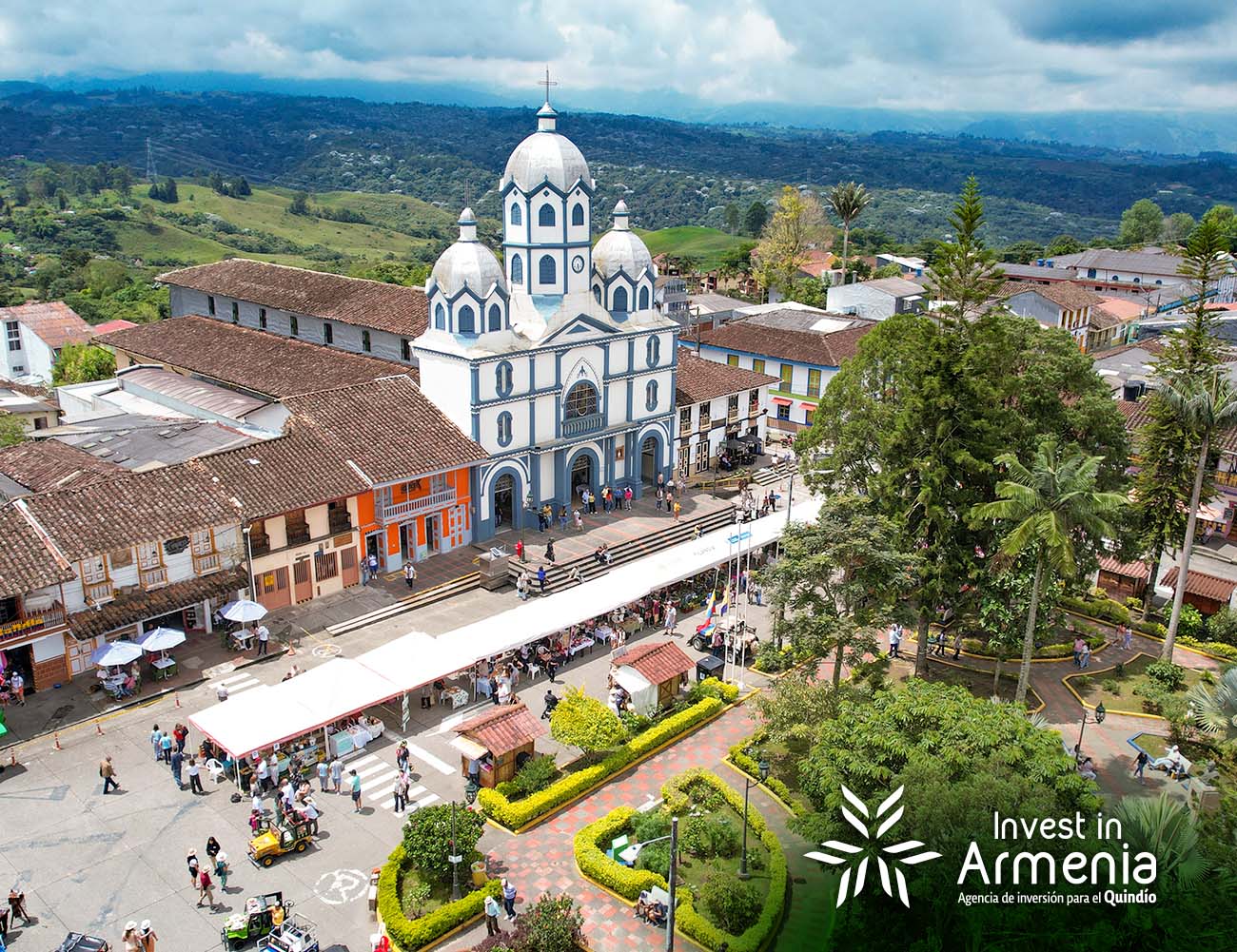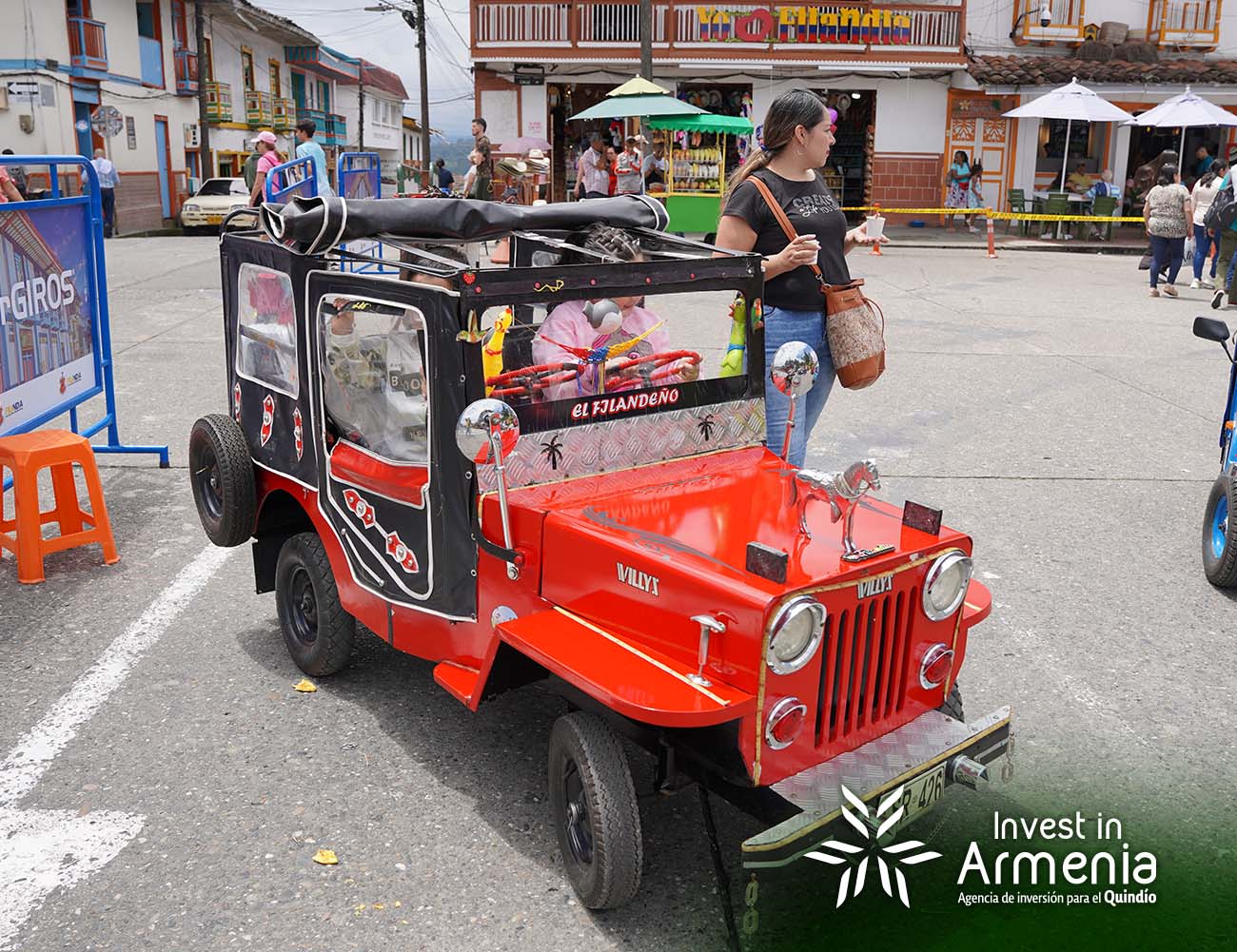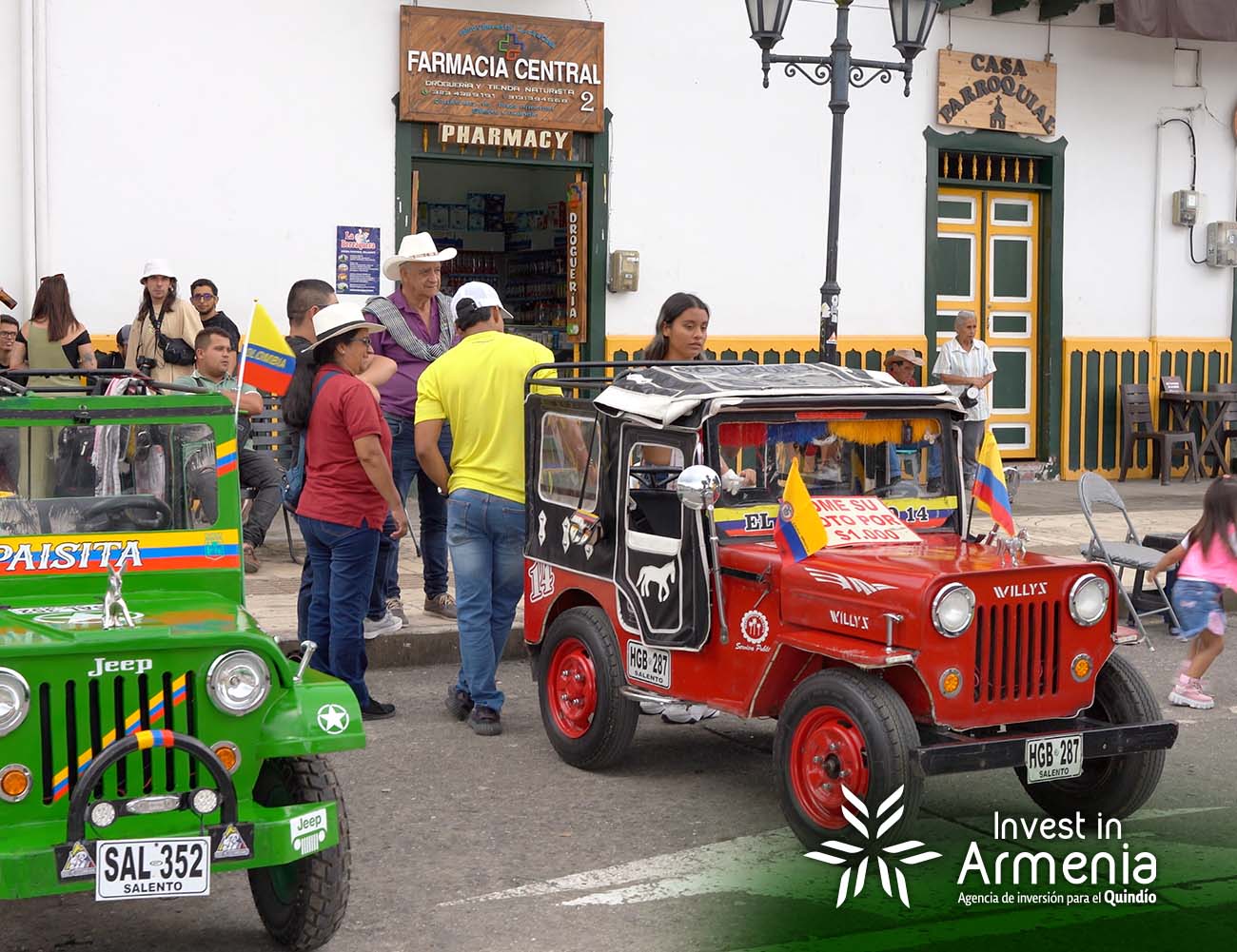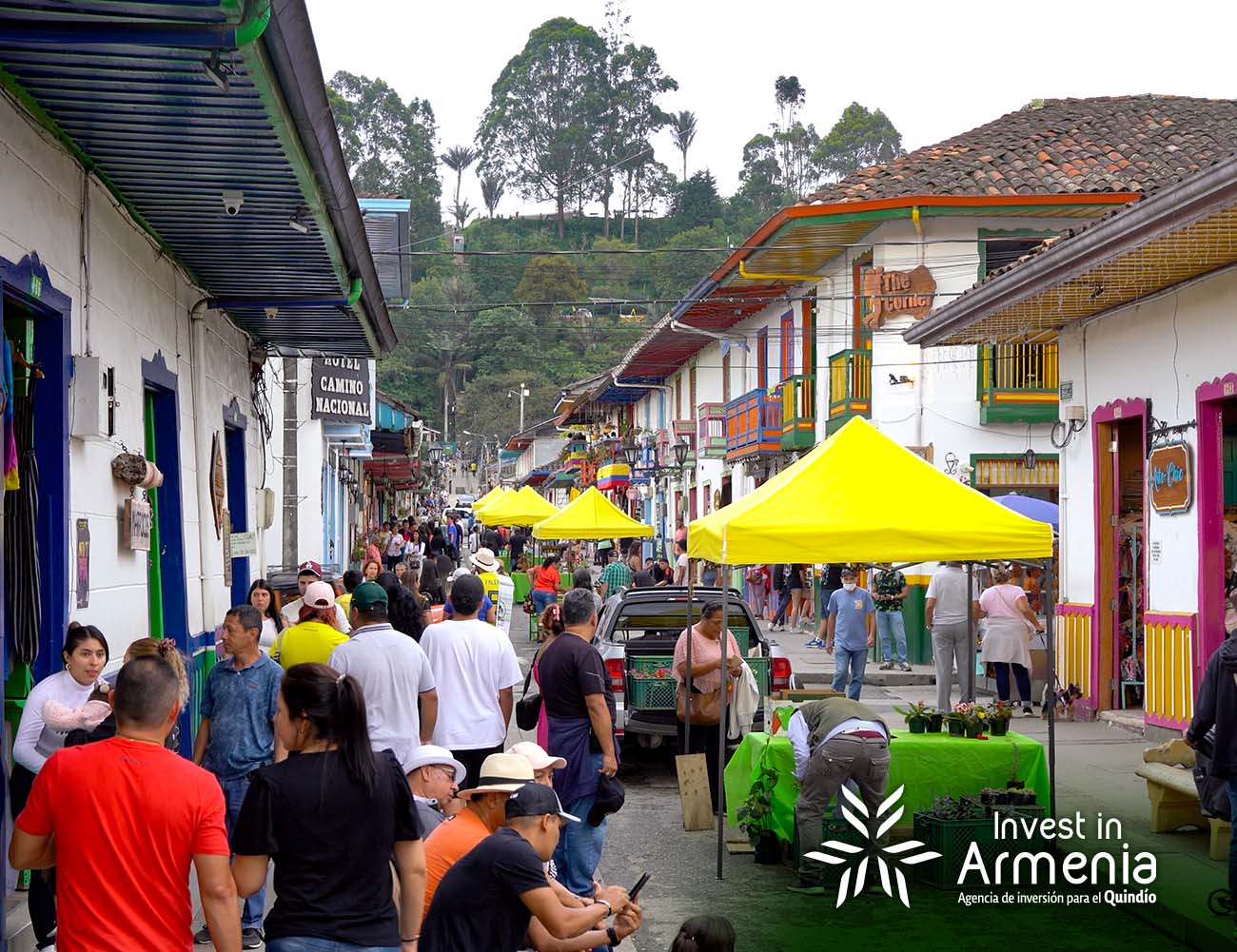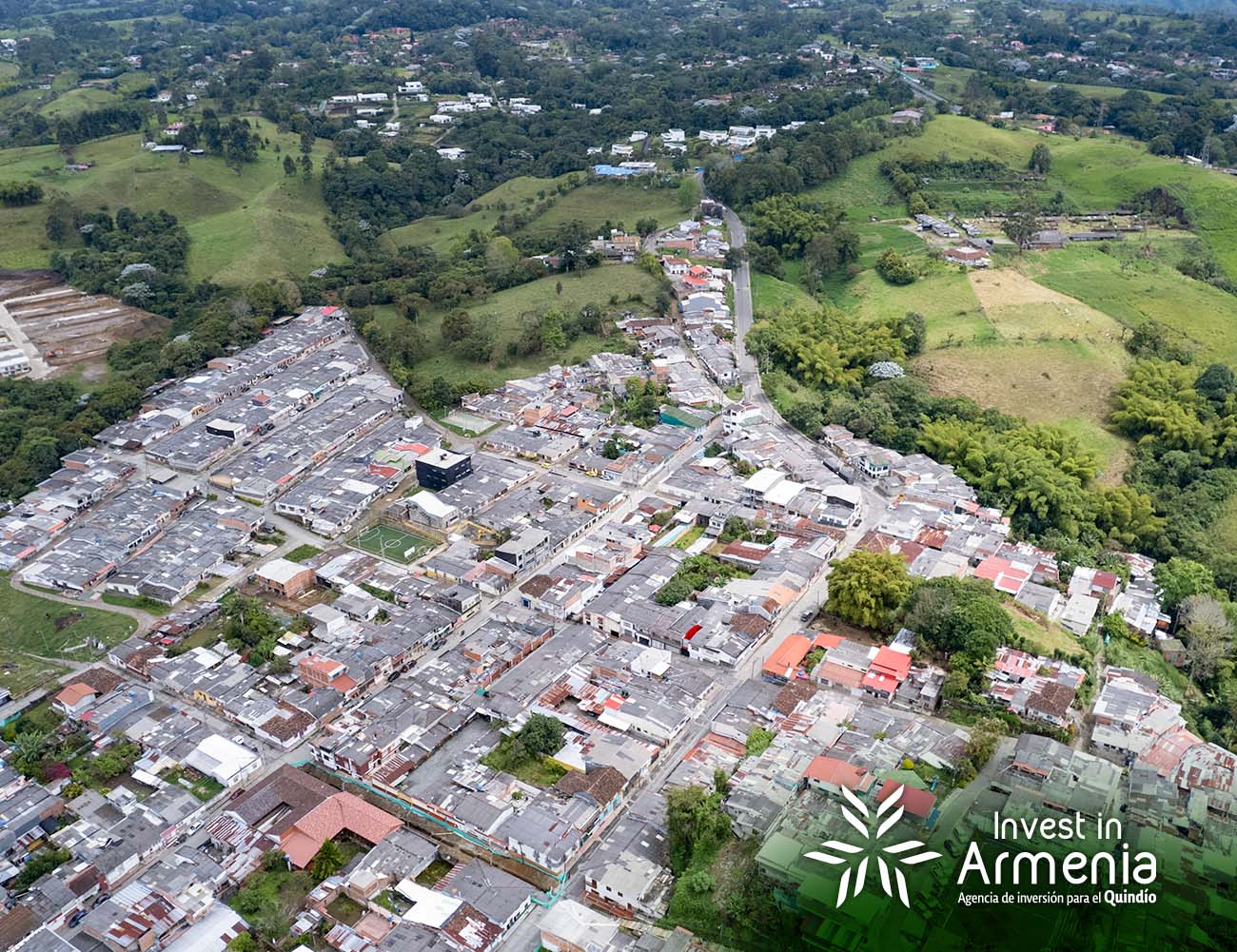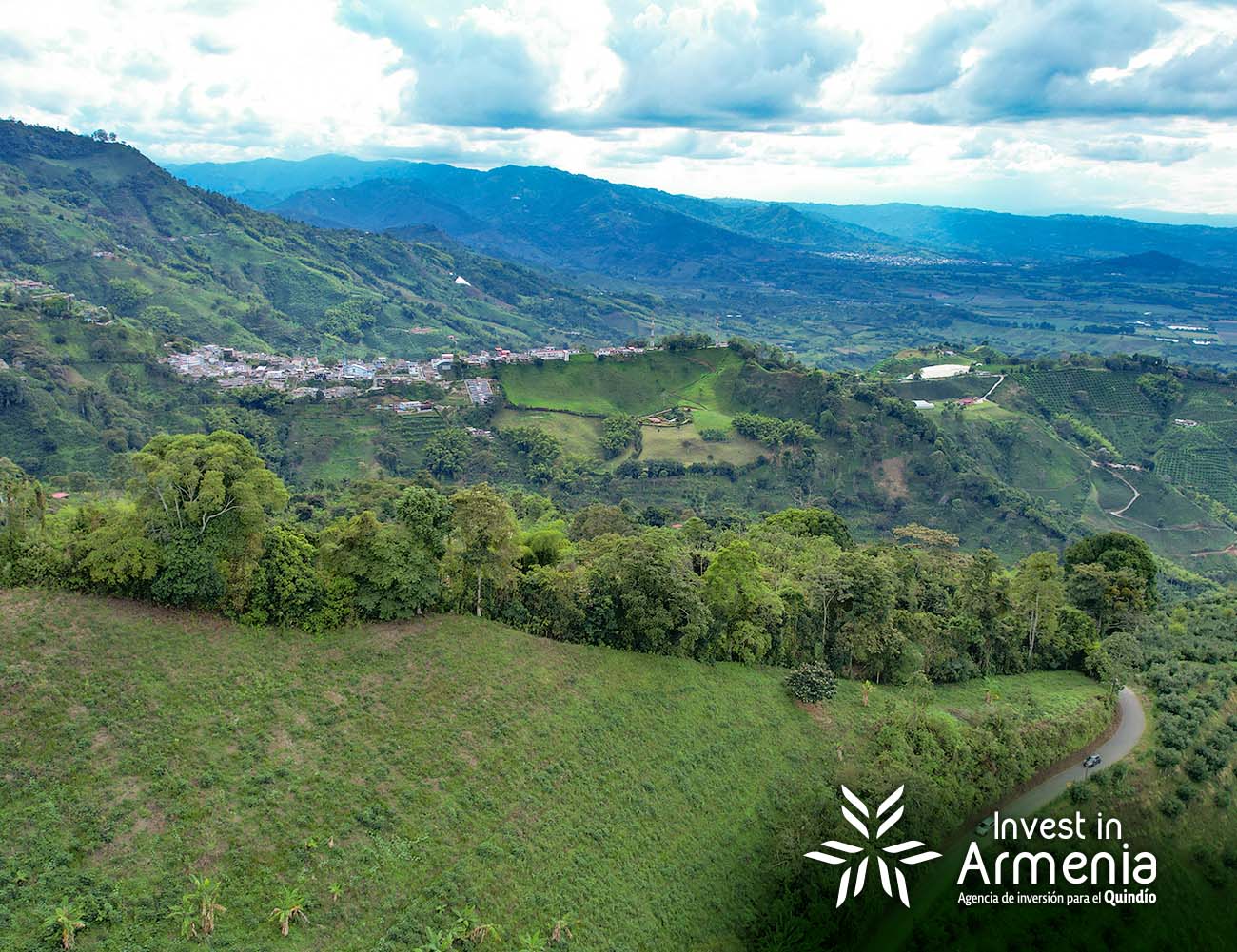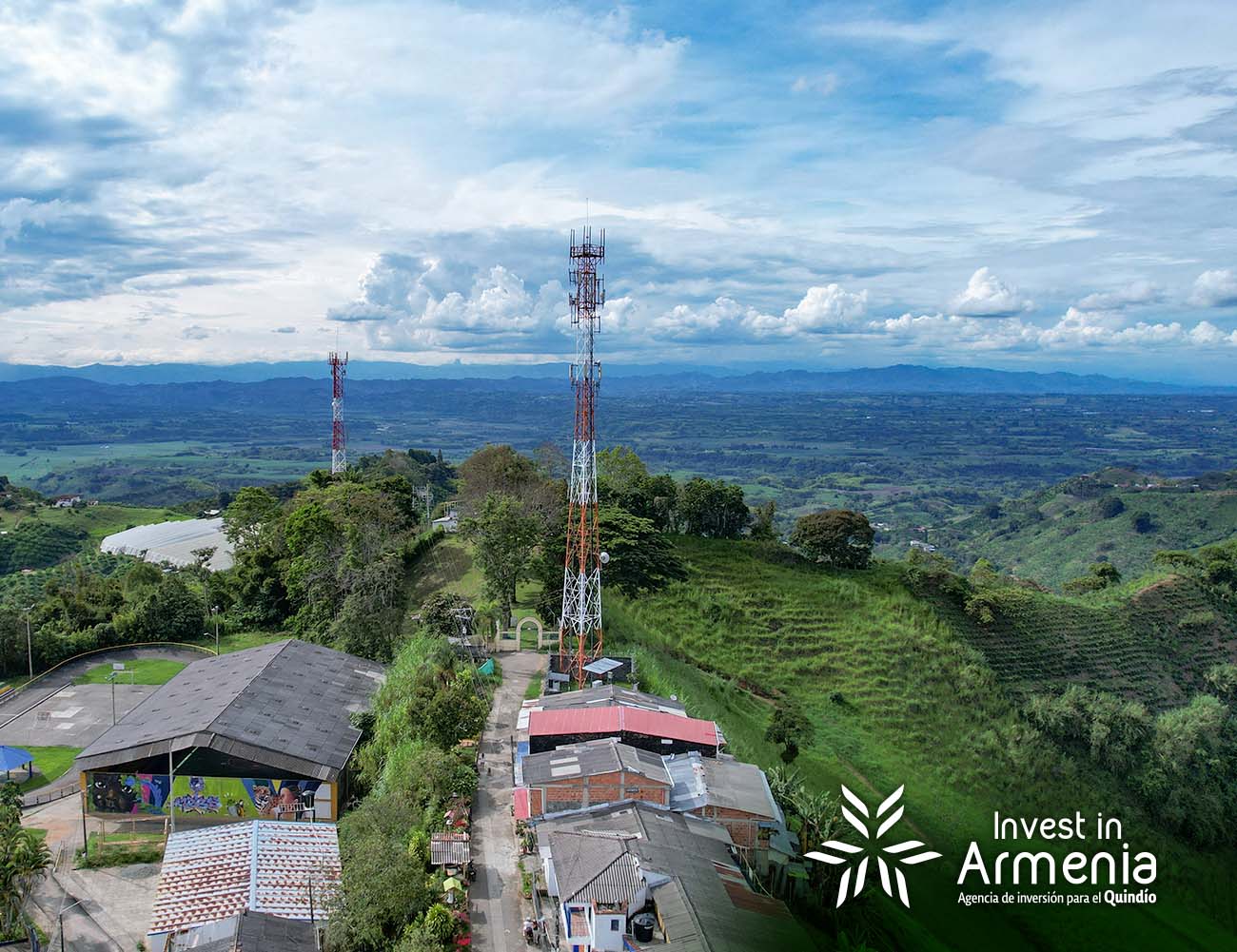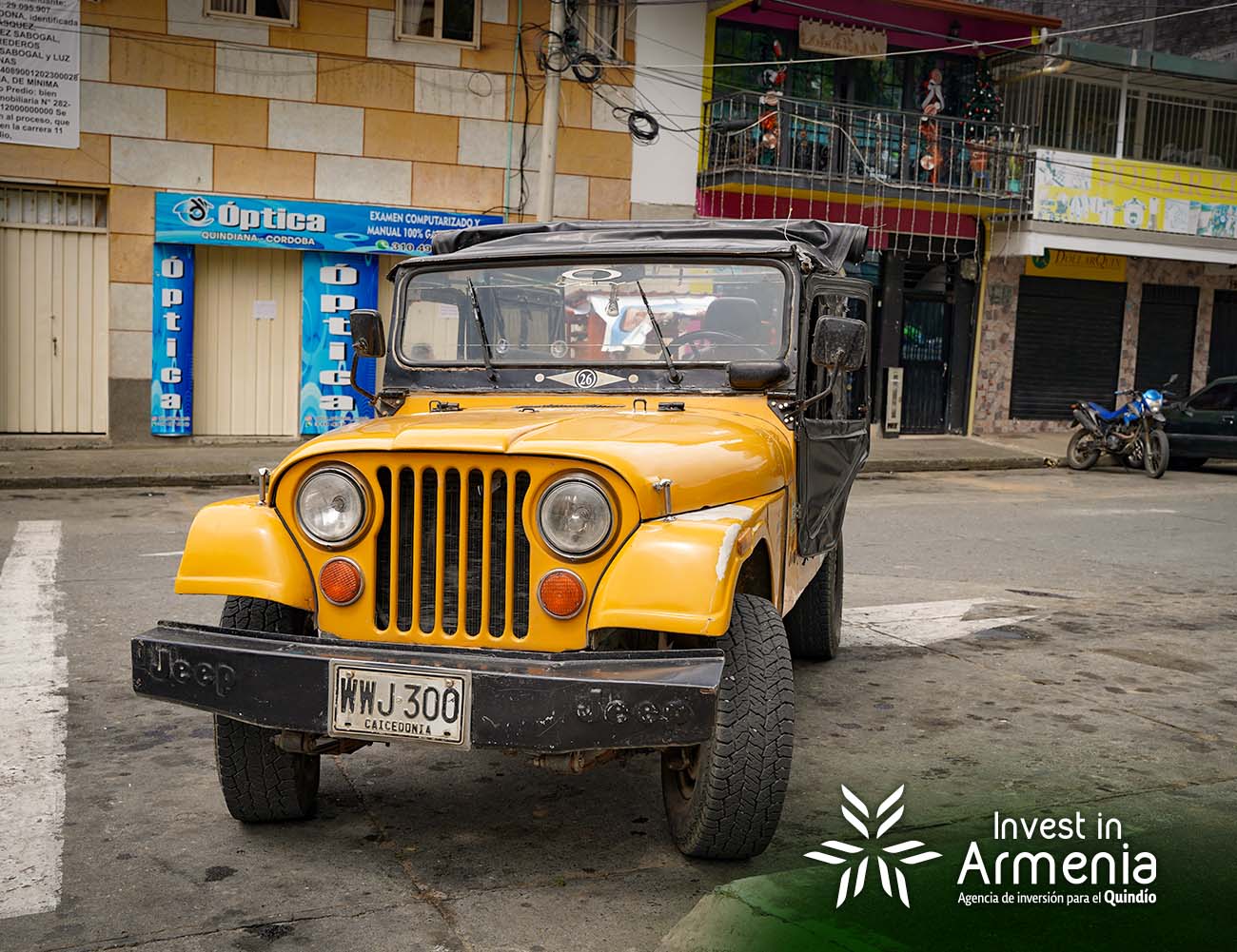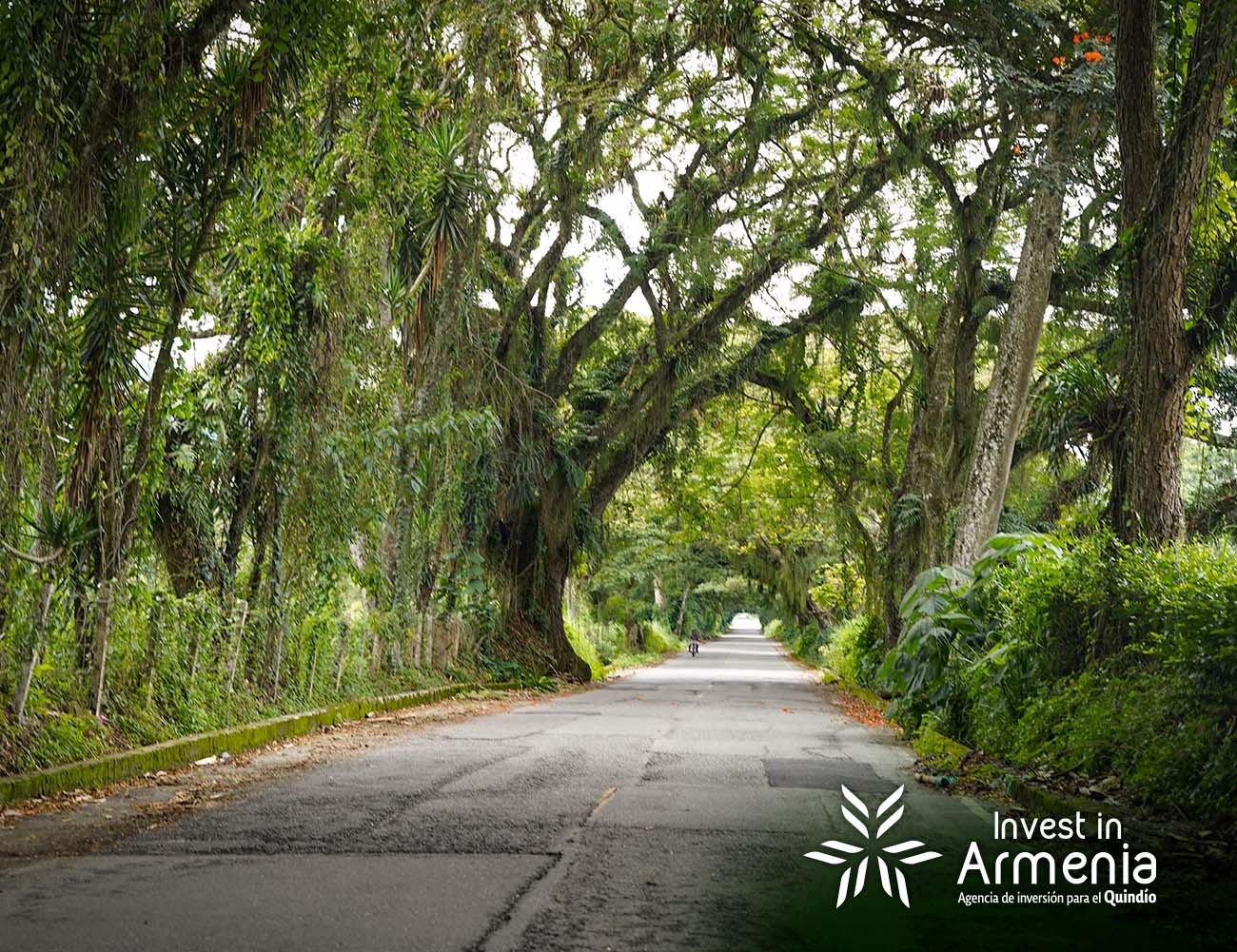Demographic data
-
Population
585.317
-
Men
272.744
-
Women
293.304
Geographic data
Quindío is located in the central-western region of Colombia, in the heart of the Andean region. Its capital is Armenia. It is part of the Eje Cafetero. It is bordered to the north by Risaralda, to the south and east by Tolima, and to the west by Valle del Cauca, which gives it a strategic position for trade and regional connectivity.
-
Total area of the region is
1.845 km2
-
Altitude of the territory between
900 a los 1.200 msnm
-
Precipitations of
2.200 mm
-
Temperatures between
10ºC y 27ºC
Sources:
- DANE information projected to 2024
- Diagnosis of the demographic sector Departmental Development Plan 2024 – 2027 Government of Quindío.
Residents in Quindío

Quindío has 12 municipalities:
Armenia
Armenia
Armenia, capital of Quindío and heart of the coffee-growing region, combines modernity with the coffee-growing tradition. Recognized for its hospitality, the high quality of its human talent and the unique landscapes that surround it, it is a key destination to enjoy the culture, tourism and natural wealth of the region.
-
With a population of 309,474
-
Altitude of 1,483 masl
-
Average temperature between 18ºC and 28ºC
Calarcá
Calarcá
Calarcá is a vibrant municipality in Quindío, famous for its National Coffee Festival and its cultural tradition. Surrounded by coffee-growing landscapes and close to the Quindío Botanical Garden, it combines history, biodiversity and human warmth in a unique destination.
-
With a population of 76,398
-
Altitude of 1,573 masl
-
Average temperature of 20ºC
-
6 Km from Armenia, at 7 min approx.


Filandia
Filandia
Filandia, awarded in 2023 by the UNWTO as the “Top Destination in Rural Tourism,” is home to important rivers in the region, and home to the fauna and flora of the Andean region. This municipality combines its natural wealth with historic architecture that reflects its cultural heritage and commitment to environmental conservation.
-
With a population of 12,654
-
Altitude from 1,300 to 2,200 m asl
-
Temperature between 12ºC to 18ºC
-
Precipitation between 2,000 and 4,000 mm
-
24 km from Armenia, 35 min. approx.


Salento
Salento
Salento, gateway to the Cocora Valley and home to the wax palm, Colombia’s national symbol, captivates with its colonial architecture, unique landscapes and vibrant cultural offerings. Renowned for its coffee-growing tradition, this municipality is a must-see destination for nature lovers and sustainable tourism.
-
With a population of 9,787
-
Altitude from 1,300 to 4,750 m asl
-
Average temperature of 17ºC
-
Average precipitation of 1,800 mm
-
24 km from Armenia, 35 min. approx.
Quimbaya
Quimbaya
Quimbaya stands out for its cultural traditions, coffee-growing landscapes and emblematic events such as the Festival of Candles and Lanterns. This municipality combines its natural wealth with a vibrant artisan heritage, attracting visitors in search of authentic experiences in the heart of Quindío.
-
With a population of 32,040
-
Altitude of 1,339 masl
-
Average temperature of 21ºC
-
A 22 Km de Armenia, a 22 min aprox.


Circasia
Circasia
Circasia is distinguished by its traditional architecture, coffee landscapes and friendly people passionate about coffee. This charming municipality combines history, nature and hospitality in the heart of the Eje Cafetero.
-
With a population of 29,650
-
Altitude of 1,771 masl
-
Average temperature of 18ºC
-
12 Km from Armenia, at 13 min approx.


Montenegro
Montenegro
Montenegro is home to outstanding theme parks that enhance its tourist vocation, such as Parque del Café, Las Bailarinas, Parque Los Arrieros and El Paraíso del Bambú y La Guadua. It is also strategically located near other renowned destinations such as Recuca and Panaca. This combination of attractions offers a unique experience that fuses coffee landscapes, agricultural tradition and recreational activities of great cultural value.
-
With a population of 38,460
-
Altitude between 900 and 1,294 masl
-
Average temperature of 21ºC
-
10 Km from Armenia, 10 min. approx.


Buenavista
Buenavista
Buenavista, whose name comes from the emblematic Buena Vista viewpoint overlooking Quindío and the north of Valle del Cauca, is the smallest municipality in the department. Surrounded by coffee-growing landscapes, it offers tranquility, human warmth and unique panoramic views that make it an ideal destination for relaxation.
-
With a population of 3,274
-
Altitude of 1,477 masl
-
Average temperature of 20ºC
-
33 Km from Armenia, 40 min approx.


Génova
Génova
Génova is the gateway to Las Hermosas National Natural Park and a refuge of biodiversity. Surrounded by mountains and exuberant landscapes, this municipality combines the coffee growing tradition, the warmth of its people and its natural wealth, ideal for ecotourism and agricultural development.
-
With a population of 7,773
-
Altitude from 1,300 to 1,480 m asl
-
Average temperature of 22ºC
-
Precipitation between 2,000 to 2,200 mm
-
52 Km from Armenia, 80 min approx.


Pijao
Pijao
Pijao, recognized as one of the few Cittaslow destinations in the Americas, is a paradise of tranquility surrounded by coffee-growing landscapes and Andean mountains. This municipality combines traditional architecture with the warmth of its people and a leisurely lifestyle, ideal for those seeking to connect with nature and local culture.
-
With a population of 5,452
-
Altitude of 1,700 masl
-
Average temperature 19ºC
-
31 Km from Armenia, 45 min approx.


Córdoba
Córdoba
Córdoba, cradle of the coffee tradition, is a municipality surrounded by green mountains and biodiversity. Noted for its human warmth and its commitment to the preservation of cultural landscapes, it is an ideal destination to explore the essence of Quindío.
-
With a population of 5,934
-
Altitude of 1,470 masl
-
Average temperature of 20ºC
-
24 Km from Armenia, 50 min approx.


La Tebaida
La Tebaida
La Tebaida stands out for its industrial vocation, being home to the Quindío Free Trade Zone and companies in the industrial sector, it is located in the corridor that connects Bogotá with the Colombian Pacific, a strategic point for logistics and trade. It also has the El Eden International Airport, strengthening its role in regional and national connectivity.
-
With a population of 35,189
-
Altitude of 1,200 masl
-
Average temperature 23ºC
-
17 Km from Armenia, 15 min approx.


Sources:
- DANE information projected to 2024
- Diagnosis of the demographic sector, departmental development plan 2024 – 2027 Government of Quindío.
- AA Filandia synthesis DIC
Economy
Colombia's GDP is USD 363.5 billion.
of which Quindío contributed 0.8% in 2023.
5,012 USD (p) in 2022
was the GDP Per Capita of Quindío
In 2022 they were USD 876.8
per capita exports of Quindío.
USD 275
were Quindío’s imports per capita in 2022.
Economic sectors

Wholesale and retail trade: repair of motor vehicles and motorcycles; transportation and storage; accommodation and food services
(22.3%)

Agriculture, livestock, hunting, forestry and fishing
(21,7%)

Public administration and defense; education; human health and social services; human health and social services.
(16.9%)

Real estate activities
(8,4%)

Construction
(5.2%)

Professional, scientific and technical activities
(4.7%)

Manufacturing industries
(4.4%)

Artistic, entertainment and recreational activities, service activities:
(3.2%)

Electricity supply, gas, water distribution, sewage disposal and wastewater treatment
(2.8%)

Others
(10,4%)
Fuentes:
- DANE
- Banco Mundial

Education and training
Quindío occupies the1st place at national levelin terms of English language proficiency.
52,346 enrolled in 2022,equivalent to 17.4% of Armenia's population.
The region has more than9 institutionsof higher education.
Quindío
ranks 9th on the competitiveness index
3rd placein basic and secondary education
5th placein infrastructure and innovation
5th placein higher education and job training
6th placein ICT adoption
7th placein institutions
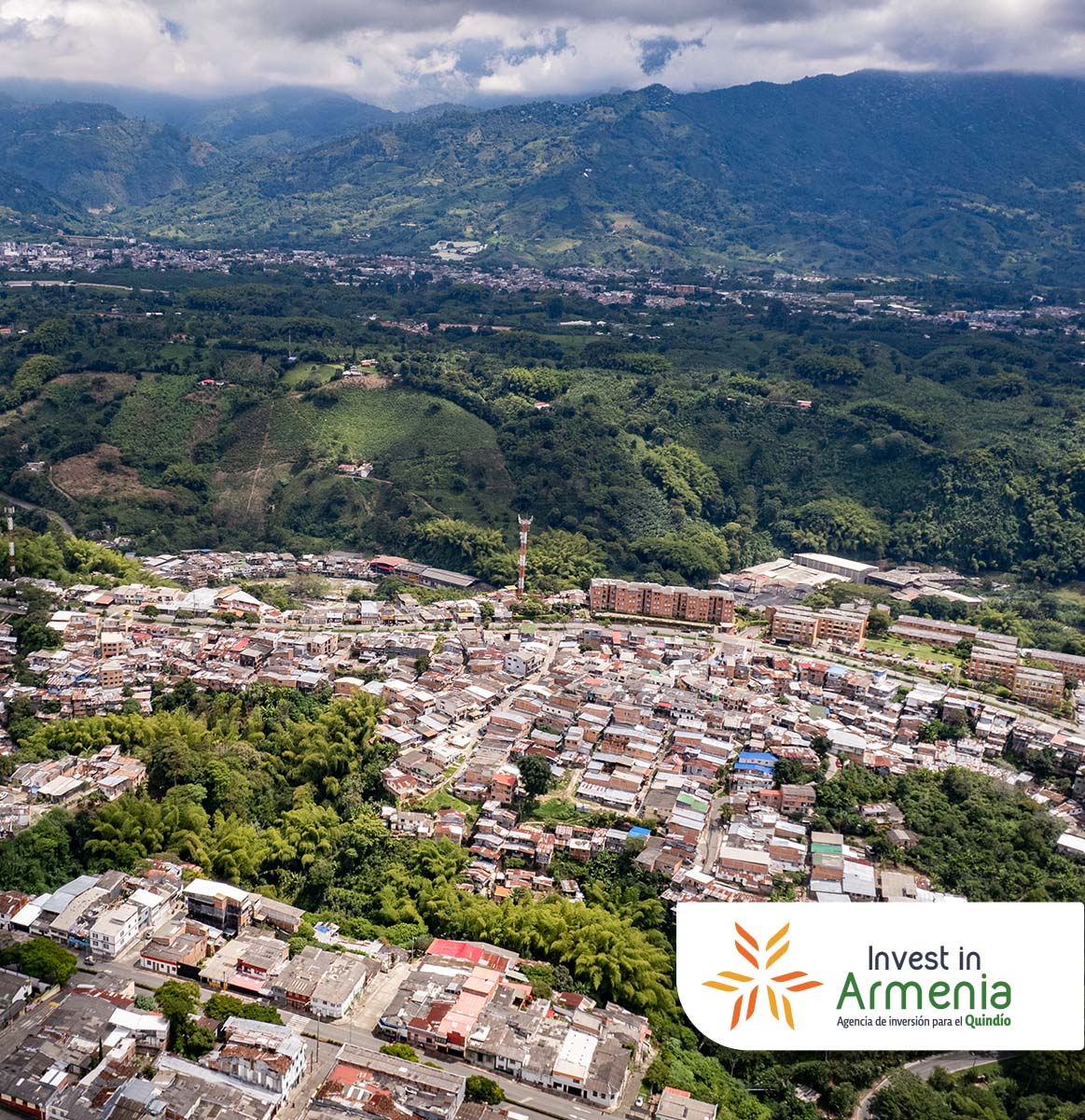






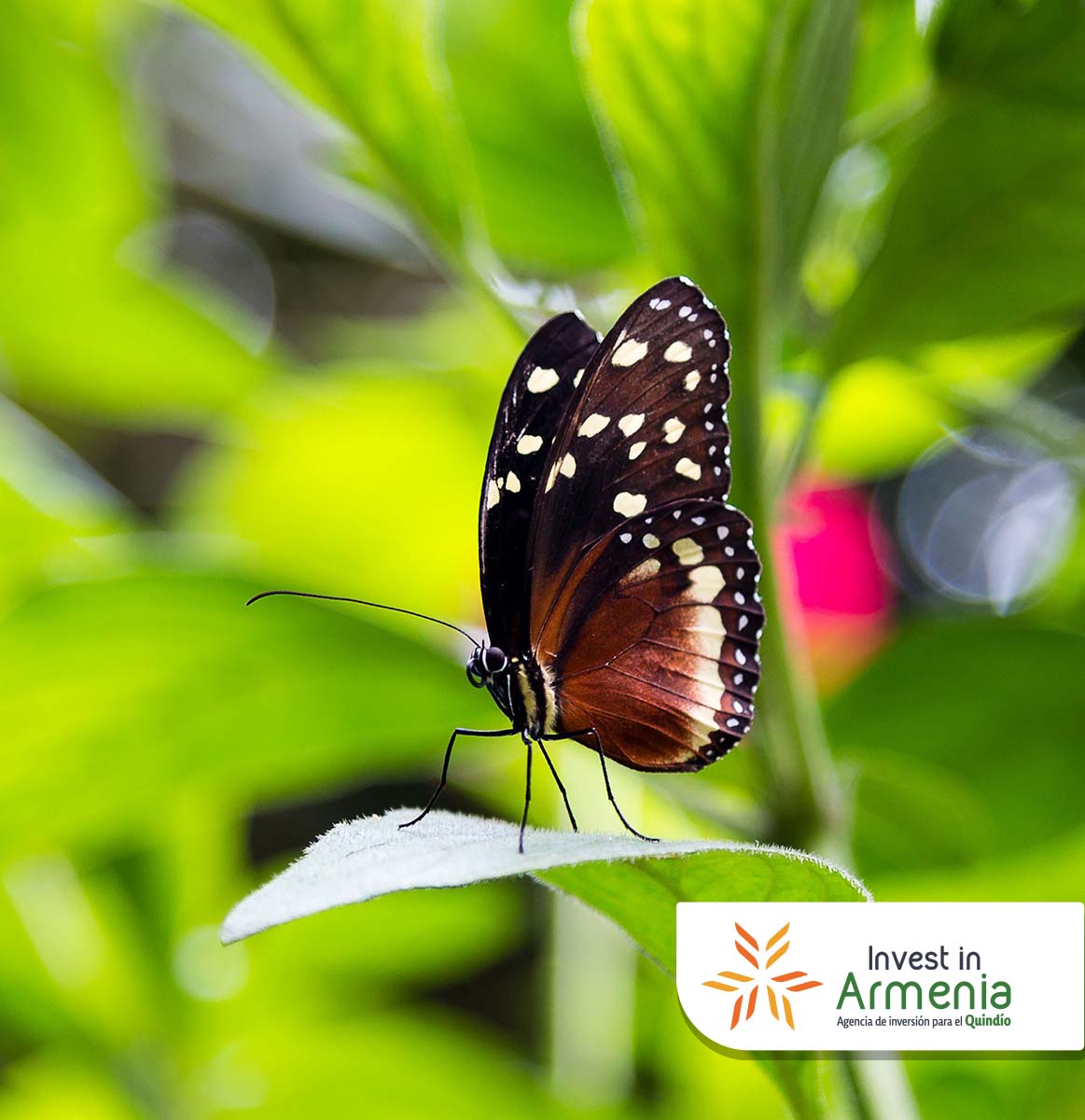


Bilingualism
In 2024, the region will rank 1st nationally in terms of English language proficiency.


Sources:
- Departmental Competitiveness Index 2023.
- Education First 2024.














